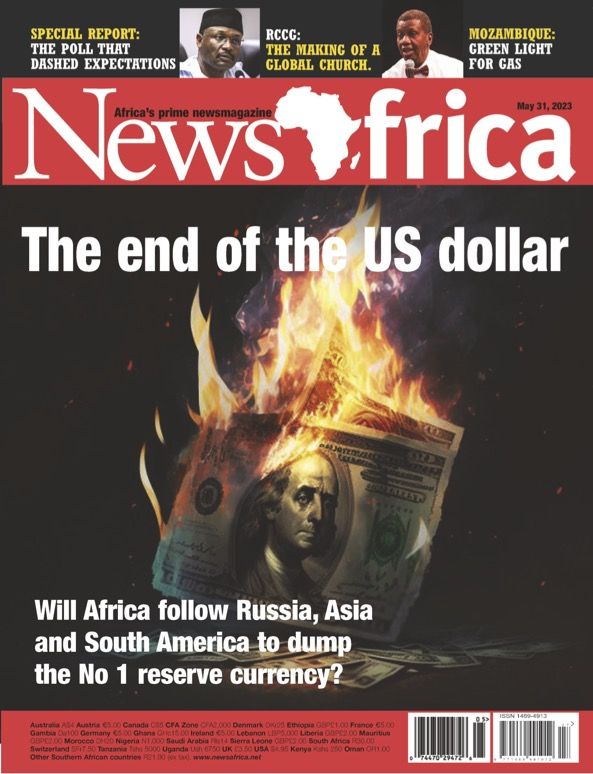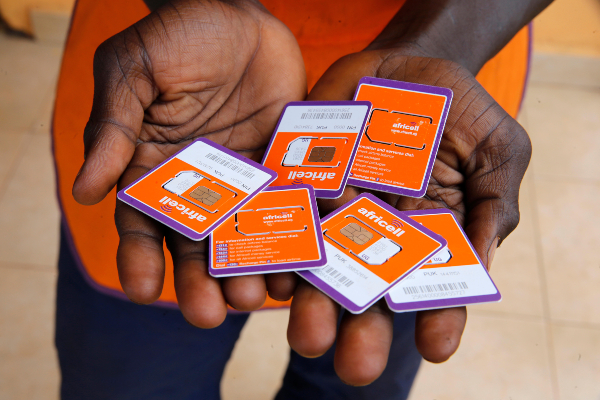Digital breakdown – Millions are at stake in TV digital migration wars as the regulator sticks to its guns. By Zachary Ochieng, Nairobi
IN A SITUATION reminiscent of the 1980s when the Voice of Kenya (VOK) was the only television channel in the country, these days people are having to choose between the Kenya Broadcasting Corporation (KBC) or President Uhuru Kenyatta’s K24. The situation has been prompted by the abrupt switching off of analogue signals of the three leading broadcasters – Nation Television (NTV), Kenya Television Network (KTN) and Citizen TV – by the Communications Authority of Kenya (CAK) following their failure to comply with the digital migration deadline set by the regulator for December 2014. After a lengthy dispute between the regulator and local TV stations, the Supreme Court ruled in CAK’s favour last month, which sparked off another war of words. To migrate to the superior quality digital platform, viewers must upgrade their analogue-based TV sets with converters known as set-top boxes, which allow them to watch regular free-to-air channels. One of the arguments advanced by broadcasters against the rushed implementation of digital migration is that, at $63, the cost of the set-top boxes is beyond the reach of most ordinary viewers. The government, on the other hand, insists that all channels must migrate to the digital platform by June, the global deadline set by the International Telecommunications Union (ITU). In a treaty signed at the Regional Radio Communication Conference held in 2006, ITU member states resolved to migrate from analogue to digital broadcasting by June this year. In East Africa, only Tanzania and Rwanda have migrated to the digital platforms. At the core of the row has been CAK’s decision to license only two signal distributors – Signet (a subsidiary of KBC) and Pan African Network Group (PANG), a Chinese-owned company – to provide broadcasting transmission infrastructure to broadcasters. It did not help matters that the two distributors were allowed to carry the content of the three main broadcasters free of charge. The broadcasters had argued that they should be given their own signal distribution licences and be allowed to import their own set-top boxes. CAK director-general Francis Wangusi accused the three media houses of being afraid of competition, describing them as “musketeers”. “They want to stick to their monopolistic tendencies and lock out other players. I think this is very selfish of them,” he told a media briefing in Nairobi. However, Nation Media Group chair Wilfred Kiboro has asked the regulator to extend the digital migration date to May 30, to give the media owners time to install infrastructure and import set-top boxes. “We do not trust either the Chinese PANG, whose human rights record is not clear, or Signet, which is owned by the government,” he said. But ICT cabinet secretary Fred Matiang’i has ruled out an extension. “The digital migration has taken off and there is no going back. Going back to analogue is not on the table,” he said when he appeared before the Senate Committee on Legal and Human Rights. The broadcasting market structure has significantly changed with the introduction of digital TV. The transmission of content is now outsourced to third parties – leaving the media houses to concentrate on the production of the content. They will now have to subscribe to the transmission services they once controlled via one or both of the above companies. “This is perhaps the elephant in the room,” said John Walubengo, an ICT lecturer at the Multimedia University of Kenya. “Everything else is a side-show and a curtain raiser that will eventually lead to the big question – is it risky business for media houses to rely on third parties to transmit or deliver their content to the viewers?”
As the stand-off continues, the country’s three largest media houses, Nation Media Group, Standard Group and Royal Media Services, which have together invested $44.4m in their businesses and command 80 per cent of television viewership, are losing millions of shillings in advertising revenue. A report by Price Water House Coopers on the Kenyan entertainment and media outlook for 2013-2017 estimates that expenditure on television advertising will rise from $490m last year to $550m this year and $750m in 2017. The report projects that TV will account for 45.8 per cent, of all advertising spend in Kenya, up from 35.3 per cent three years ago. TV penetration is projected to almost double over the period, from eight per cent to 12 per cent, a sign of Kenya’s expanding middle class. But with the three main channels remaining off air, the above scenario is highly unlikely. This explains why advertisers have entered the ring, urging the warring parties to come to a speedy consensus. According to Lenny Ng’ang’a, chair of the Advertising Practitioners Association of Kenya, a long drawn-out media blackout will cause large revenue losses, with a ripple effect on the economy. “The Association of Practitioners in Advertising of Kenya wishes to express its deep concern over the standoff between the government of Kenya, and the leading broadcasters over the digital migration exercise,” Ng’ang’a said in a statement. Multinationals such as Unilever and Coca Cola, which regularly advertise fast-moving consumer goods on television, are already feeling the heat, as are actors, musicians and production crews who depend on the three stations to air popular comedies and soap operas such as The Churchill Show, Aunty Boss, Papa Shirandula, Gavana, Beba Beba and Mali. According to Charles Bukeko, the name behind the Papa Shirandula, a local comedy show that airs every Thursday on Citizen TV, the shutdown will hit people’s pockets hard. “All artistes performing on screen will be affected by the shutdown,” he said. “It touches on what you earn and if it continues the impact will be huge.”
His sentiments were echoed by Ken Waudo, head of strategy, digital and creative development at Laugh Industry Kenya, which produces the Churchill Show. As the stand-off continues, both parties continue to come out with statements. Whereas broadcasters insist that majority of countries will be unable to meet the ITU’s June deadline, the regulator argues that all African countries are required to abide by it. However, it has emerged that 30 African countries have already been exempted from the deadline due to technology and infrastructural challenges. According to Professor Guy Berger, director of Freedom of Expression and Media Development at Unesco, it is mainly southern African countries that are being made to commit themselves to the ITU decision.
“The 2006 treaty allows for an additional five years for a total of 30 African nations beyond the 2015 cut-off point,” he explained in a report titled Beyond Digital Migration: The Future of state-owned broadcasters in Southern Africa. “Most Latin American countries, incidentally, have agreed to a switch-off of analogue TV transmissions around 2020.” According to Berger, the 2020 cut-off was also agreed for countries that did not attend the 2006 conference. “In fact, the 2020 list includes powerhouses of the North African region like Egypt, Tunisia, Algeria and Morocco, which are more advanced technologically than many countries in Sub-Saharan Africa,” he added. Also included in that list are countries closer to Kenya such as Ethiopia, Sudan, Eritrea, DR Congo and Somalia. But in a statement issued to the media CAK’s Francis Wangusi said Kenya had not sought an extension. “During the 2006 Regional Radio Conference, some countries made specific requests for an extension of the deadline to June 17, 2020 but only in the VHF band since most of their TV stations were operating on this frequency,” Wangusi said. “Kenya attended the meeting and did not make any such request.”
In his report, Prof Berger warned against the rush to beat the 2015 deadline “when there is no pressing matter of frequencies, when many are exempted from the ITU deadline and when the consequences of missing the due date are minor”. As the tug of war between the regulator and the broadcasters continues to rage, the question on the lips of most observers is “Who will blink first?”.



